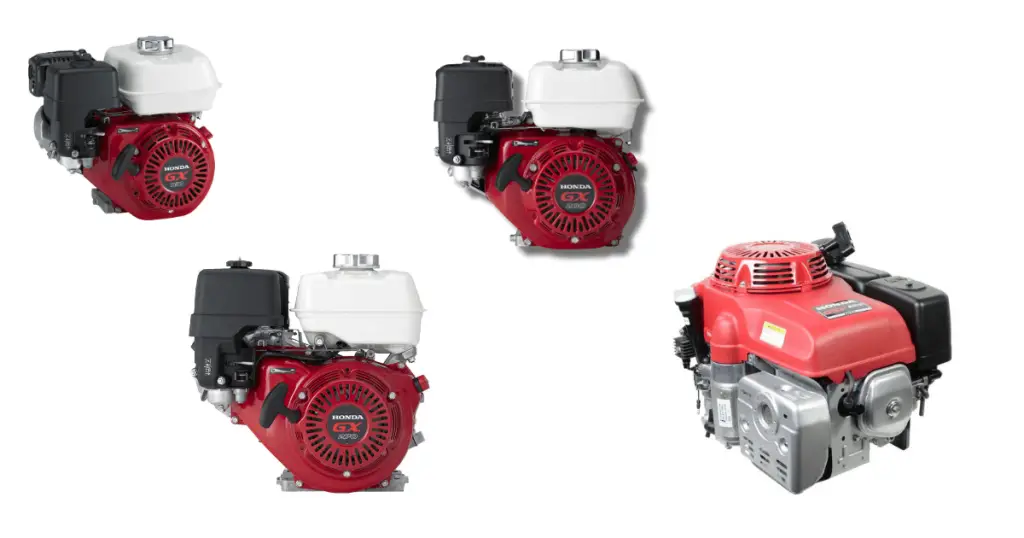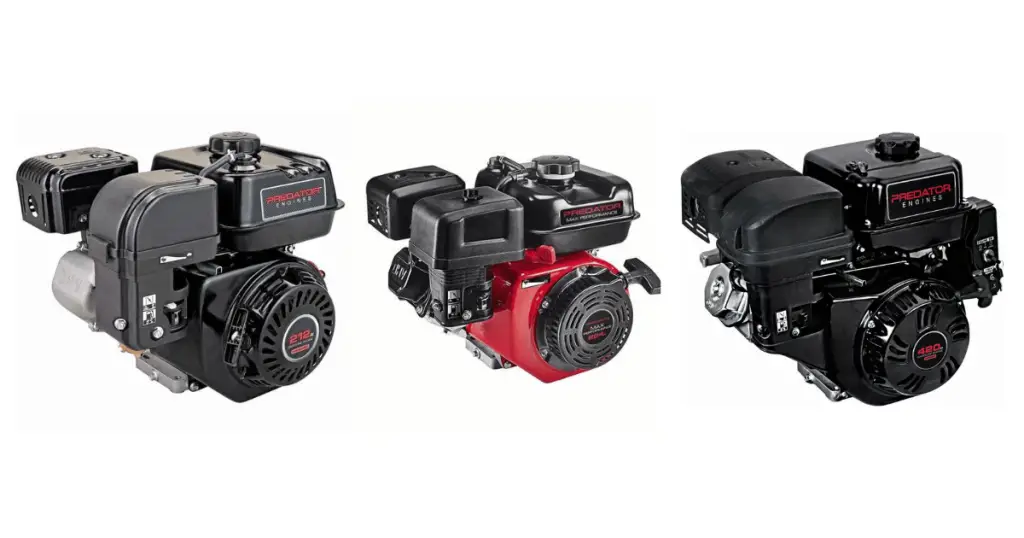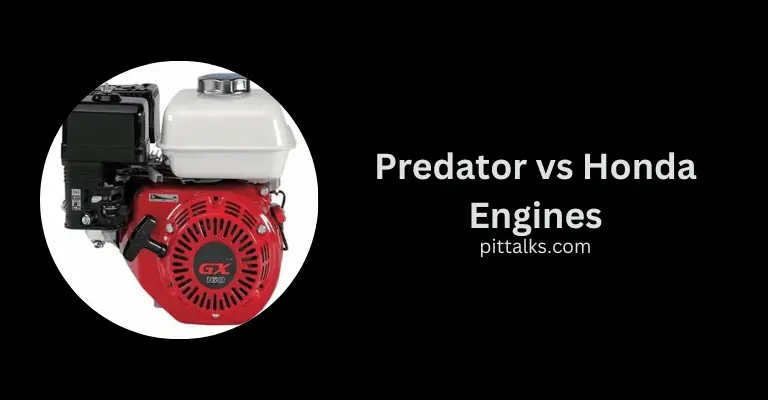Last Updated on February 20, 2024 by Pittalks
In the thrilling world of go-karting, the engine is more than just a component; it’s the soul that powers the adventure.
If you’ve ever found yourself at the crossroads of choosing between a Predator and a Honda engine, you’re not alone. These two giants have been revving up the karting scene, each with its own unique offerings.
In this comprehensive showdown, we’ll delve into the intricacies of both brands, comparing their popular models, performance metrics, and overall reliability. Whether you’re a karting novice or a seasoned racer, this article promises key takeaways that will guide your next engine purchase. So, buckle up and let’s set the wheels in motion!
Overview of Popular Honda Engines and Their Variations

Honda, a name synonymous with reliability, has been a staple in the go-karting community for years. Their engines are known for their longevity, consistent performance, and adaptability to various karting needs. Let’s delve into some of their most popular models:
- Honda GX200: This 196cc engine is a favorite among kart racers for its durability and ease of modification. It’s an ideal choice for those looking for a balance between power and efficiency.
- Honda GX160: A slightly smaller 163cc engine, the GX160 is known for its efficiency and compact design. It’s perfect for lighter karts and those looking for a reliable engine without the need for excessive power.
- Honda GX270: Stepping up in power, the GX270 offers a displacement of 270cc. This engine is designed for more demanding applications, providing a robust performance while maintaining Honda’s signature reliability. It’s a popular choice for larger karts and those seeking a bit more oomph on the tracks.
- Honda GX390: At the top of Honda’s GX series for go-karting, the GX390 boasts a 390cc displacement. This powerhouse is built for those who demand top-tier performance without compromising on durability. Its larger size and power output make it suitable for competitive racing and heavy-duty karting applications.
Predator Engines, Their Displacement Options, and Popularity

Predator engines have quickly carved a niche in the go-karting community, primarily due to their affordability coupled with commendable performance. Let’s explore some of their standout offerings:
- Predator 212: This engine, with a displacement of 212cc, has become a go-to choice for many karting enthusiasts. It strikes a balance between power and cost, making it especially appealing to beginners and those on a tighter budget.
- Predator 224 Kit: For those looking to squeeze out more power from their Predator 212, the Predator 224 kit is a game-changer. This kit allows users to increase the engine’s displacement, effectively transforming the Predator 212 into a 224cc powerhouse. It’s an excellent option for those seeking enhanced performance without investing in an entirely new engine.
- Predator 420: The Predator 420 is the behemoth of the Predator lineup with a displacement of 420cc. Designed for those who demand superior power and performance, this engine is ideal for competitive racing and heavy-duty applications. Its robust build ensures that it can handle the rigors of intense karting sessions, all while offering the value-for-money proposition that Predator is known for.
Related read: Who Makes The Predator Engine?
Predator vs Honda Engines: Diving Deeper

When comparing these engines, it’s essential to look at them side by side:
- Honda GX200 vs Predator 212: While both engines are close in displacement, the Predator 212 often comes at a lower price point. However, the Honda GX200 is known for its longer lifespan and fewer maintenance needs.
- Honda GX160 vs Predator 212: The Predator 212 has a slight edge in terms of displacement, but the Honda GX160’s efficiency and proven track record make it a worthy competitor.
- Honda GX270 vs Predator 224 Kit: The GX270, with its native 270cc displacement, offers a more robust performance out of the box. In contrast, the Predator 212 transformed with the 224 kit provides flexibility for those wanting to upgrade their existing engine, making it a cost-effective solution with comparable power.
- Honda GX390 vs Predator 420: These are the powerhouses of their respective lineups. The Honda GX390, with its 390cc displacement, is built for top-tier performance and durability. The Predator 420, on the other hand, offers a slightly larger displacement and is designed for those seeking raw power at an affordable price point.
Statistical Showdown: Reliability, Performance, Availability, and Modification Options

When it comes to choosing the right engine for your go-kart, several factors come into play. Let’s delve into the specifics:
1. Reliability:
- Honda Engines: Honda’s reputation in metallurgy is renowned. The hardening process they employ ensures that their engines, especially the GX series, are built to last. The GX200, for instance, is known to last three times longer than any Predator engine.
- Predator Engines: While Predators, especially the 212, offer commendable reliability for their price point, they might not match the longevity of a Honda. However, for short-term or less frequent use, they serve as a cost-effective solution.
Related articles:
> 5 Dreaded Problems With Predator Engines
> Predator 212cc Engine Troubleshooting Guide
2. Performance:
- Honda Engines: Known for consistent power delivery and efficiency. The GX200, for example, can handle up to 5100 rpm without any issues.
- Predator Engines: The Predator 212 Hemi, even in its stock form, has shown impressive performance. With just the governor removed and no other modifications, it’s been observed to be among the top performers in certain racing events.
3. Availability:
- Honda Engines: Being a global brand, Honda engines are widely available and have a vast network of service and parts centers.
- Predator Engines: Predators are primarily available through Harbor Freight in the US, making them easily accessible. However, their global availability might be limited compared to Honda.
4. Modification Options:
- Honda Engines: The GX series, especially the GX200, has a plethora of aftermarket parts available for those looking to tweak and enhance their engine’s performance.
- Predator Engines: The Predator 212 stands out here, especially with kits like the Predator 224, allowing users to increase displacement and performance. However, some experts suggest that not all modifications are necessary, and the stock engine itself offers commendable performance.
See next: The Best Clutches for The Predator 212cc
Which Is Better For Go-Karting? (Objectively)
Objectively, both brands offer solid options for go-karting. Honda’s engines are renowned for their reliability and longevity, making them a long-term investment. On the other hand, Predator engines, especially the 212, provide excellent value for money, making them ideal for beginners or those on a budget.
Which Would I Recommend From Experience?
From experience, if you’re looking for an engine that will last you years with minimal fuss, Honda is the way to go. However, if you’re just starting out or need an affordable yet powerful engine, Predator is a fantastic choice.
Pros and Cons for Each and How To Tell For Yourself
- Honda:
- Pros: Long lifespan, consistent performance, wide range of models.
- Cons: Generally more expensive, heavier.
- Predator:
- Pros: Affordable, good power output, easy to modify.
- Cons: Shorter lifespan compared to Honda, limited model range.
To decide for yourself, consider your budget, how often you’ll be karting, and whether you’re looking for a long-term investment or a starter engine.
Maintenance consideration: Predator 212 Oil Change Guide
Recap and Ending Thoughts
Navigating the maze of go-kart engines can be a daunting task, but armed with the knowledge from our deep dive into Predator and Honda engines, you’re now better equipped to make an informed decision. Both brands have their merits, with Honda shining in reliability and Predator offering unbeatable value.
Remember, the best engine for you hinges on your specific needs, budget, and karting aspirations. If this article revved up your interest, don’t hesitate to explore further and even test out these engines for yourself.
After all, the true essence of go-karting lies in the thrill of the ride. Ready to hit the tracks? Your perfect engine awaits!
Read more: All About Predator 212cc Valve Lash
FAQs
Honda engines are often priced higher due to their reputation for reliability, advanced engineering, and the brand’s long-standing history in the industry.
While the Predator 212 is modifiable and many enthusiasts do enhance its performance, it’s essential to understand that modifications can impact the engine’s lifespan and warranty.
Regular maintenance is crucial for any engine. Typically, after every 20 hours of use, a basic check-up is recommended. However, always refer to the manufacturer’s guidelines.
Yes, both Honda and Predator engines have a range of third-party parts available, allowing for customization and upgrades.
While both brands are relatively fuel-efficient, specific consumption rates can vary based on the model and how the engine is used. Always refer to the manufacturer’s specifications for detailed information.

